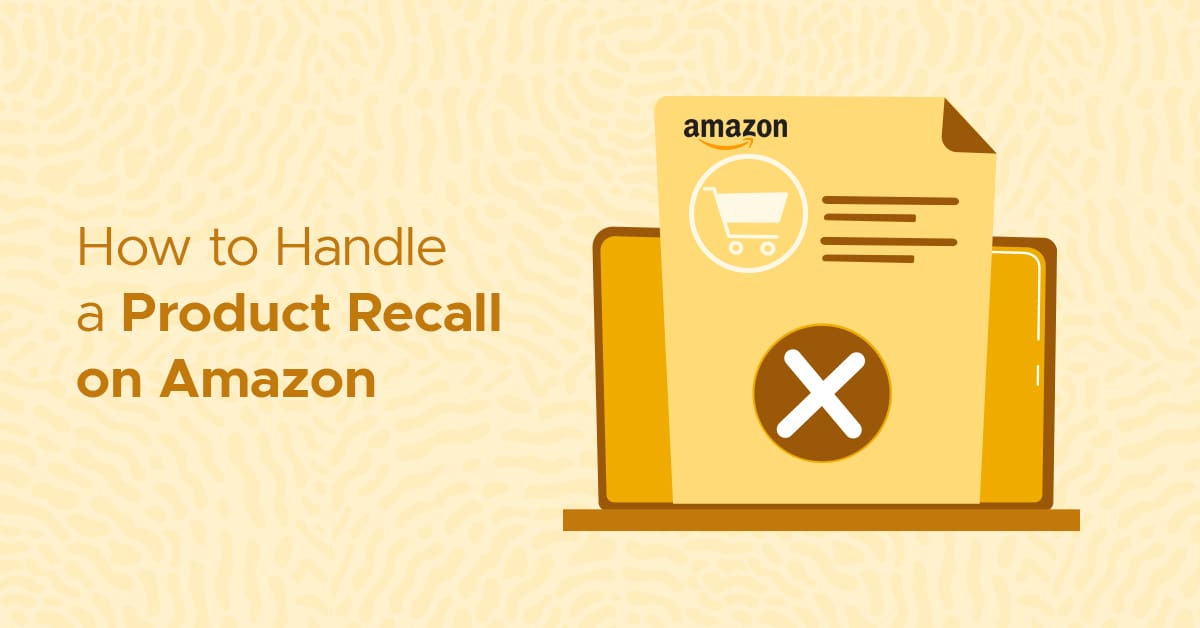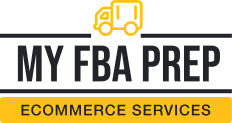
How to Handle a Product Recall on Amazon

Recalling your products on Amazon is stressful, especially when you consider all the consequences for your business. But it’s a necessary step to mitigate greater risks and address any issues head-on.
Amazon has issued almost 600 recall alerts in 2024 alone, with more likely to come before it ends. Product recalls happen more often than people think, and while they’re not ideal, there are ways to handle them and prevent similar situations in the future.
We’ll discuss the essential information and steps for managing recalls and safeguarding your business on Amazon’s marketplace. Armed with this knowledge, you’ll be able to resolve issues faster, limit damages, and protect your brand reputation.
Types of recalls
There are two main types of product recalls, and understanding the difference between them will help you manage the process more efficiently while ensuring your business’s compliance.
1. Regulator-announced recalls
This recall is initiated by regulatory bodies such as:
- Consumer Product Safety Commission (CPSC)
- Food and Drug Administration (FDA)
- National Highway Traffic Safety Administration (NHTSA)
- Environmental Protection Agency (EPA)
- Federal Communications Commission (FCC)
- U.S. Department of Agriculture (USDA)
When a potential safety issue arises, these organizations work closely with the manufacturer to investigate the problem and formally announce a recall. For Amazon sellers, the recall notice may come as a directive from Amazon themselves, acting in response to their legal responsibility and the regulatory body’s findings.
2. Manufacturer-driven recalls
Unlike the previous type, manufacturer-driven recalls originate directly from the company responsible for the product. This could be the manufacturer, brand owner, or supplier that identifies an issue and takes the initiative to inform retailers and other partners in the supply chain.
In this case, sellers on Amazon receive a notification from their supplier or distributor. To limit any negative fallout, it’s crucial to act quickly and address the issue, whether that’s updating product listings, removing inventory, or contacting affected customers.
The product recall process on Amazon
Amazon’s product recall procedure is straightforward and designed to protect all stakeholders. This quick guide will walk you through how it works.
Step 1: Amazon suppresses the affected product listings
As soon as Amazon determines the need for a product recall — whether through their own monitoring, regulators, or even your own policing — the most common first step is to take down the product listing. The removal prevents new orders, which helps control the situation and minimizes potential risks and impacts.
Step 2: Amazon notifies customers about the recall
Amazon will notify customers and Amazon Business account holders via email about the recall. For consumers, the email will include details of the recall and instructions for requesting refunds, returns, or exchanges.
The platform has also made it easier for customers to review public alerts through its Recalls and Safety Alerts page. This proactive approach helps Amazon maintain trust and ensures safety for both buyers and sellers.
Step 3: Sellers begin to remove recalled inventory
At this stage, sellers are advised to pull their recalled inventory immediately. They’re expected to coordinate with Amazon by:
- Responding to inquiries from regulatory agencies involved in the recall
- Halting the shipment of any pending orders
- Removing affected inventory
The goal of this action is to limit the damage and resolve the issue quickly.
Step 4: Eliminate recalled inventory from Amazon
Finally, all recalled stock is removed from Amazon’s warehouses. Depending on the situation, the products may be destroyed, returned to the manufacturer, liquidated, or quarantined for further investigation.
My product was recalled on Amazon — what now?
A product recall on Amazon can feel like a whirlwind, but it’s imperative to remain calm and approach the situation methodically. If you stay organized and take the right steps, you can eventually reinstate your product listing through an appeal process. So, rather than viewing a recall as the end, treat it as an opportunity to improve your products and services.
Thoroughly review the recall notification
It’s crucial to understand why your product was recalled. Knowing the reason will help you take the right steps to get your listings back up on the marketplace. Plus, it’s a chance to strengthen your brand and show your customers that you’re a reliable seller.
Halt sales and shipments
Pausing sales and shipments goes beyond simply removing your listing. You must also stop any pending orders from being shipped. This helps prevent further inconvenience or harm to your customers and minimizes potential losses for your business.
Communicate with your customers
Almost half of consumers expect companies to reply to their messages within four hours. Given that emphasis on communication, you as the seller must reach out to your buyers when something affects them, whether it’s a minor inconvenience or a more significant problem. Doing so builds trust in your brand and shows you’re responsible and care about their experience. These qualities keep customers loyal and help strengthen your reputation, even in the face of a recall.
Identify and resolve the issue
You may need to dig a little deep to pinpoint the root cause of the product recall. This is when your established relationships with suppliers or manufacturers come in handy. You can also collaborate closely with regulatory bodies.
Keep in mind, you may need to file paperwork or submit documents along the way, especially if your product issues are solvable. In those cases, you need to:
- Achieve compliance for reinstatement: Again, you can appeal to reinstate your listing, so a recall is not the end of the line. If the issue is fixable, focus on meeting all requirements for compliance. That may involve updating your product’s design, packaging, or safety certifications. Take the time to address all the concerns raised during the recall to ensure you fully resolve everything.
- Submit a request for reinstatement: Once you’ve remedied the problem, you can file a reinstatement request with Amazon. Be sure to have all the necessary information to secure approval, such as:
- An explanation of what caused the issue
- Documentation of the steps you’ve taken to fix it
- Evidence of compliance with Amazon’s standards and any relevant regulatory bodies
It may take days, weeks, or even months to receive a response, so patience is key. Once your appeal is successful though, Amazon will reverse any penalties imposed on your account so you can move forward.
- Monitor and improve product quality: Your work isn’t finished once your Amazon listing is back up though. Take this lesson and use what you’ve experienced to implement stronger quality checks. This will prevent future occurrences and keep your business running smoothly on the marketplace.
Wrapping up — Manage Amazon product recalls diligently to safeguard your brand
Product recalls on Amazon can be discouraging, but understanding the process helps minimize their impact. By following the steps outlined in this article, you can swiftly take action to remove affected items and provide clarity to your consumers. This, in turn, further strengthens your reputation with both your stakeholders and Amazon.
Need help navigating recall issues? MyFBAPrep can guide you along the path to compliance. Our team of Amazon experts can help you create an efficient and effective strategy for handling product recalls, among many other logistical services we offer. Reach out to our team today to discuss how we can support your business through the ups and downs of eCommerce selling.
